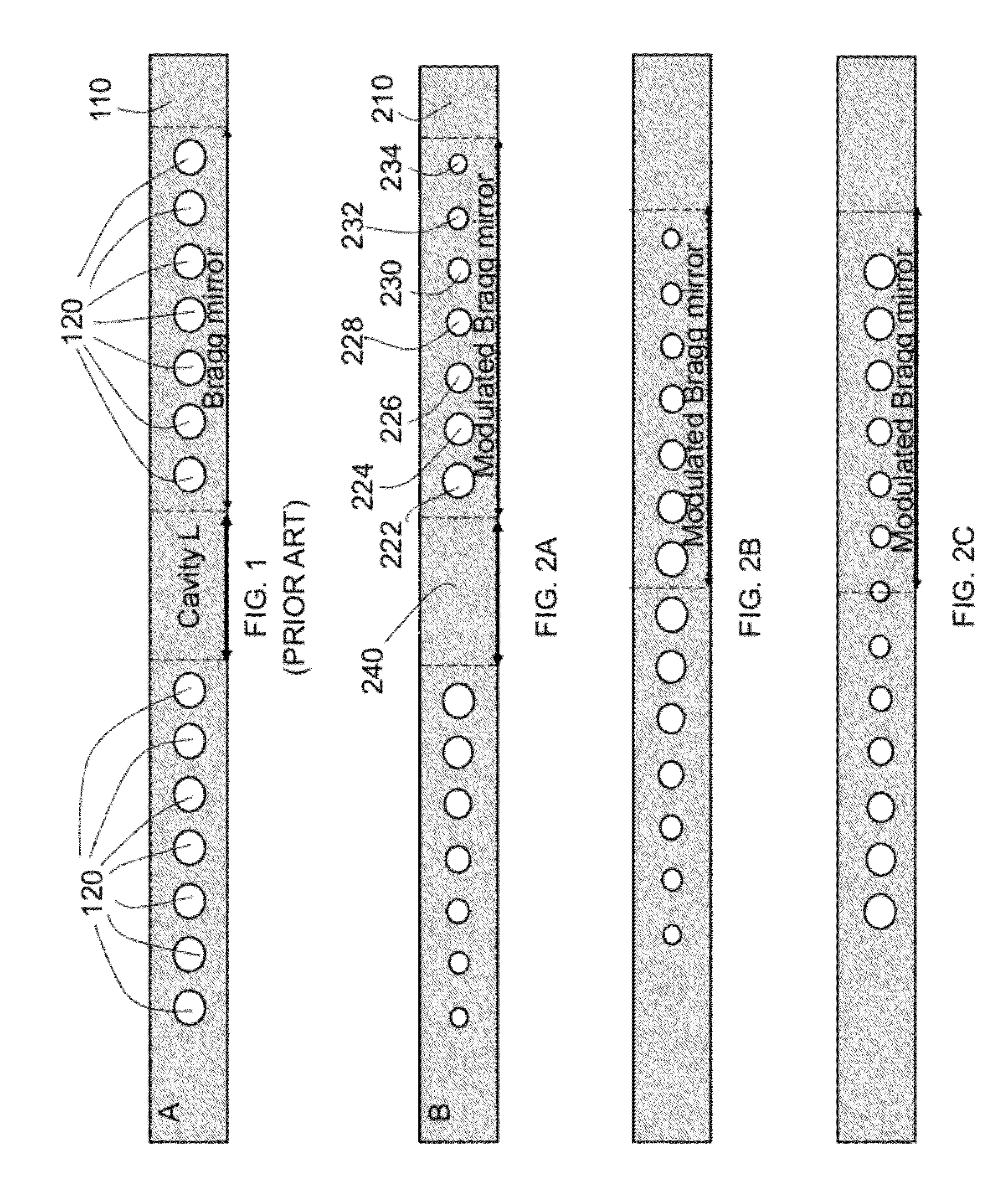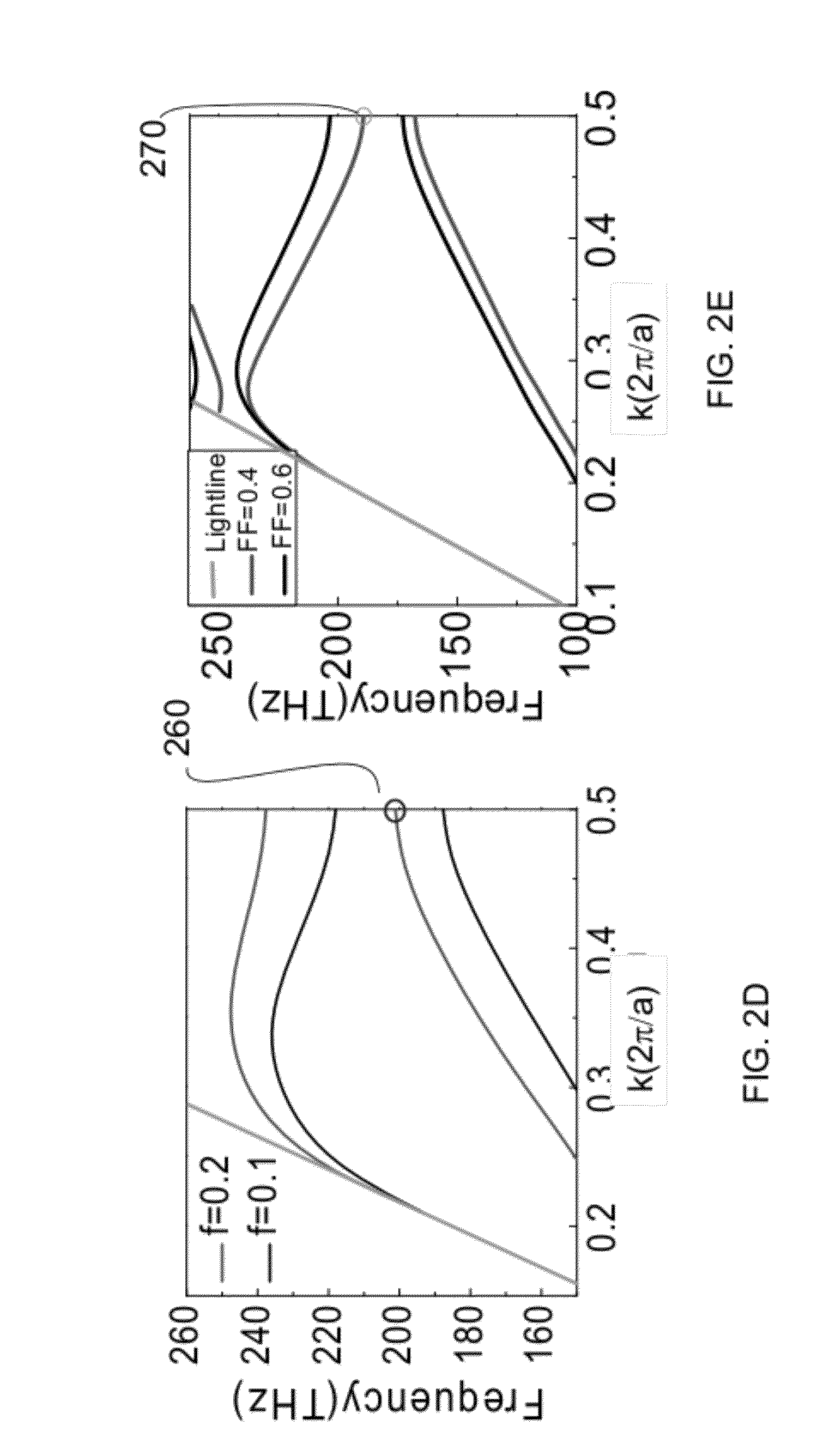High quality factor photonic crystal nanobeam cavity and method of designing and making same
a photonic crystal and nanobeam technology, applied in the field of high quality factor photonic crystal nanobeam cavity and the field of designing and making same, can solve the problems of inefficiency of trial-based method and loss of scattering, and achieve the effect of reducing modeling and computation tim
- Summary
- Abstract
- Description
- Claims
- Application Information
AI Technical Summary
Benefits of technology
Problems solved by technology
Method used
Image
Examples
Embodiment Construction
[0035]The design approach of the present invention is deterministic in the sense that it does not involve any trial-based manipulation of the cavity geometry, including hole shifting, re-sizing and overall cavity re-scaling. The present approach results in ultra-high Q cavity by-design. Moreover, the final cavity has resonance that is typically less than 1% away from a desired operation frequency. Therefore, the method of the present invention allows for fast design of optical cavities with predetermined resonant frequency and by-design ultra-high Q. Further, the design and manufacturing method of the present invention requires only computationally inexpensive, photonic band calculations (e.g. using a plane wave expansion method). Ultra-high Q cavity devices can be manufactured according to the design parameters using electron beam or optical lithography methods.
[0036]The design method is based on the realization of a Gaussian-like field profile proposed in Q. Quan, P. B. Deotare, a...
PUM
| Property | Measurement | Unit |
|---|---|---|
| thick | aaaaa | aaaaa |
| thickness | aaaaa | aaaaa |
| width | aaaaa | aaaaa |
Abstract
Description
Claims
Application Information
 Login to View More
Login to View More - R&D
- Intellectual Property
- Life Sciences
- Materials
- Tech Scout
- Unparalleled Data Quality
- Higher Quality Content
- 60% Fewer Hallucinations
Browse by: Latest US Patents, China's latest patents, Technical Efficacy Thesaurus, Application Domain, Technology Topic, Popular Technical Reports.
© 2025 PatSnap. All rights reserved.Legal|Privacy policy|Modern Slavery Act Transparency Statement|Sitemap|About US| Contact US: help@patsnap.com



